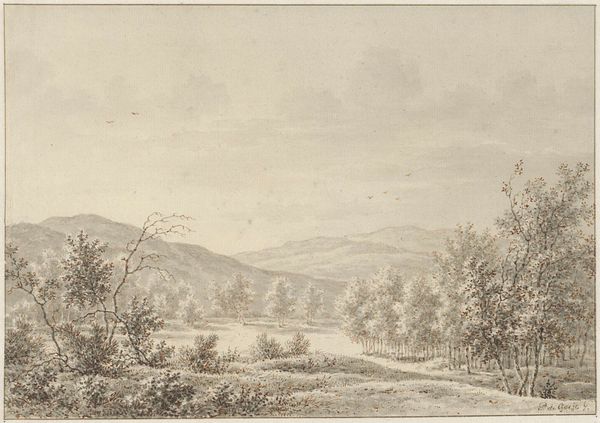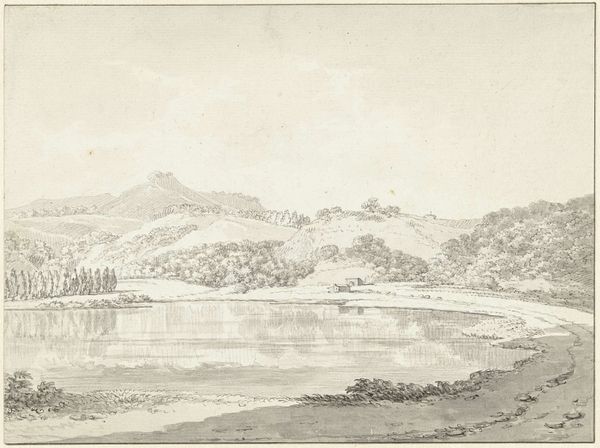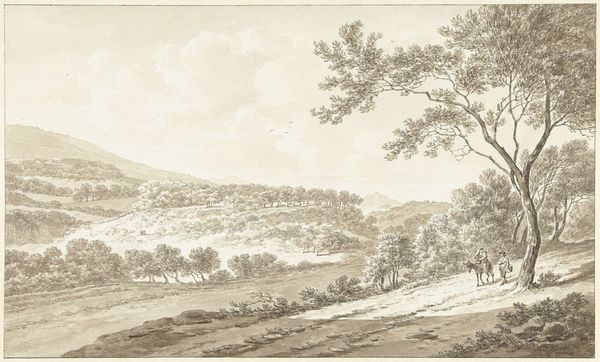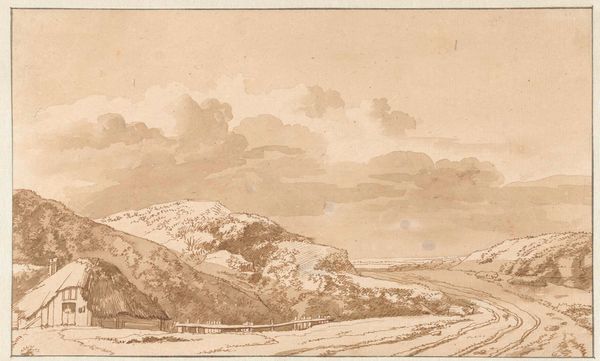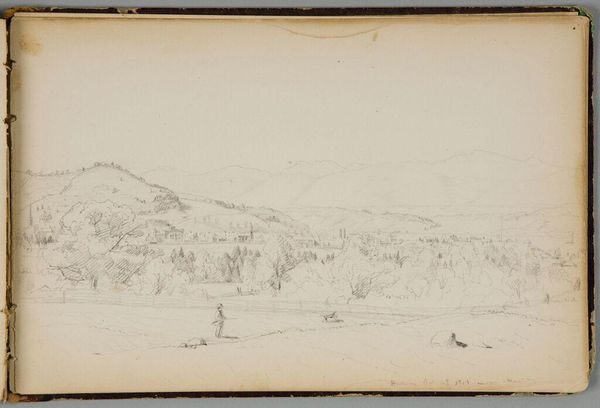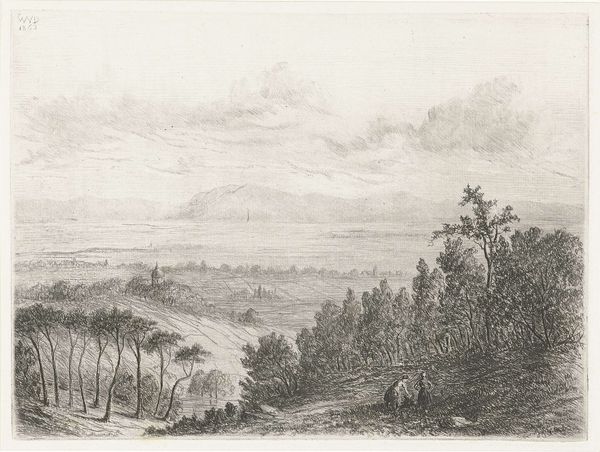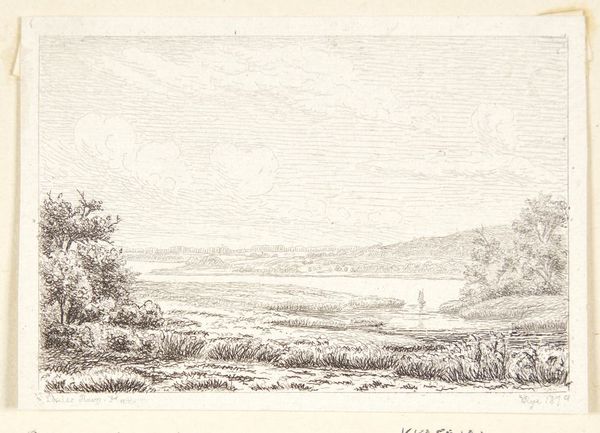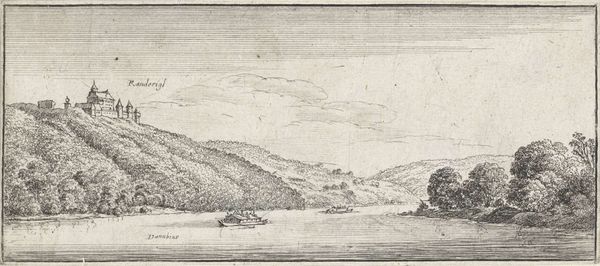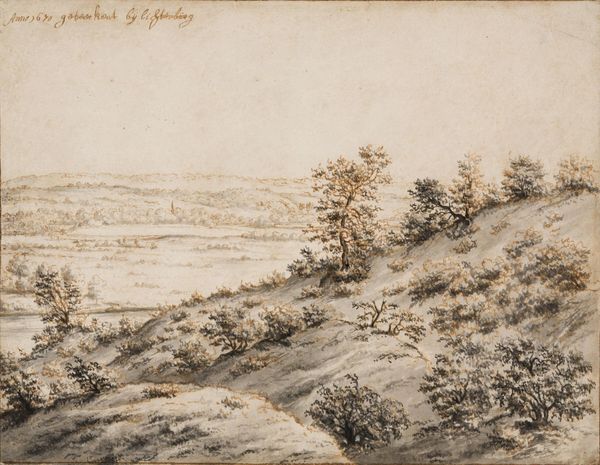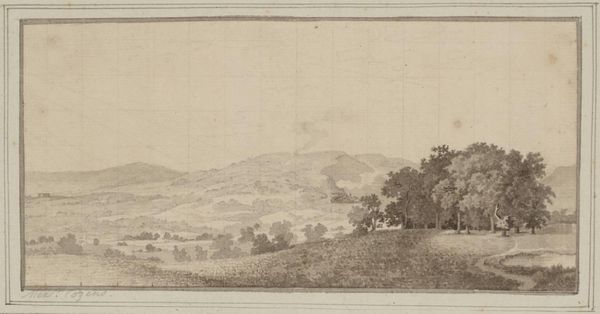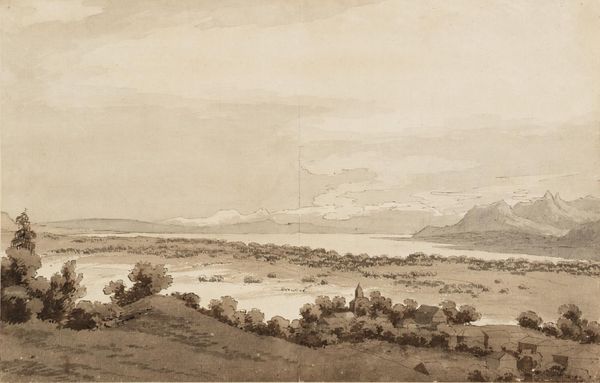
plein-air, watercolor
#
plein-air
#
pencil sketch
#
landscape
#
watercolor
#
romanticism
#
watercolour illustration
#
watercolor
Dimensions: height 242 mm, width 357 mm
Copyright: Rijks Museum: Open Domain
Editor: This is Abraham Teerlink's "Glooiend landschap," made sometime between 1786 and 1857. It's a delicate plein-air landscape in watercolor. I'm struck by how soft and dreamlike it feels, like a memory fading into the distance. What do you see in this piece, looking at it from an iconographic perspective? Curator: Well, the dreamlike quality you mentioned is key. Consider how the Romantic period turned to landscape not just as scenery, but as a reflection of the inner self. The rolling hills and muted colors create a sense of harmony, but also a certain melancholic longing. Do you notice any repeating shapes or compositional rhythms? Editor: I see the gentle curves repeated in the hills, the trees, even the path... Everything seems to flow. Is that intentional? Curator: I believe so. Think of those curves as symbolic of nature's cyclical patterns – birth, growth, decay, renewal. The winding path, almost disappearing, invites the viewer on a journey, perhaps not just through the landscape, but also through life. It might evoke feelings of hope, but also uncertainty. Does that resonate with you? Editor: It does! And the fact that the landscape is "glooiend," sloping or undulating, adds to the feeling of constant change and movement. Curator: Precisely. And don’t forget the absence of strong, defined figures or dramatic events. The focus is on the land itself, elevated to a near spiritual plane. The cultural memory here lies in our deeply rooted connection to nature and its inherent power to evoke emotion. Editor: This makes me see it less as a simple landscape and more as a symbolic representation of the human condition within nature. Thank you for your insights. Curator: My pleasure. It's in examining these quiet works that we sometimes uncover the loudest echoes of history and feeling.
Comments
No comments
Be the first to comment and join the conversation on the ultimate creative platform.
